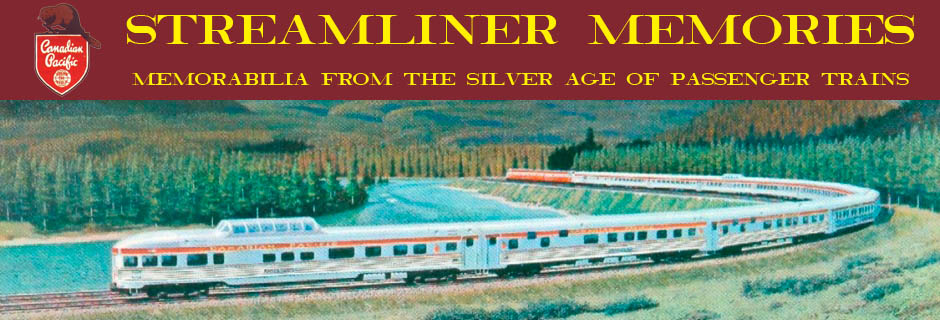In 1955, General Motors had 20 cover ads in Railway Age, but only three are clearly attributable to Hill. Ten were done by an artist named Ralph Brillhart and one was by an artist named Herb Mott. The Christmas cover was by Stan Ekman. I’ll cover these artists in future posts.
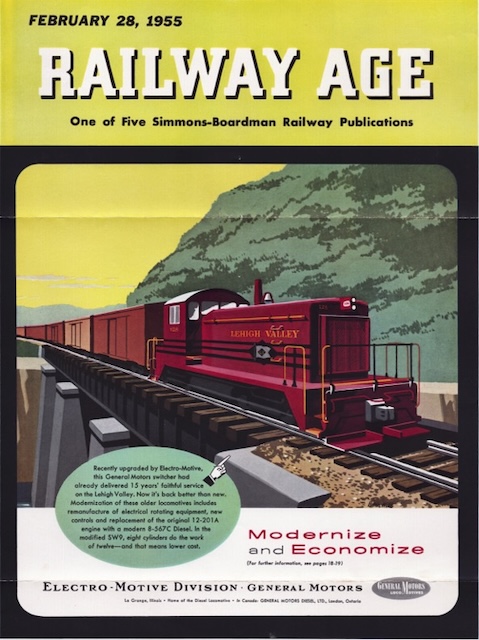 All of today’s images are from the Palumbo collection. Click image to download a 2.3-MB PDF of this magazine cover. Click here to download a 9.3-MB higher resolution PDF of this cover.
All of today’s images are from the Palumbo collection. Click image to download a 2.3-MB PDF of this magazine cover. Click here to download a 9.3-MB higher resolution PDF of this cover.
That leaves five covers whose artwork has no signature. Hill may have done some of those, and I’ll examine that more in a future post.
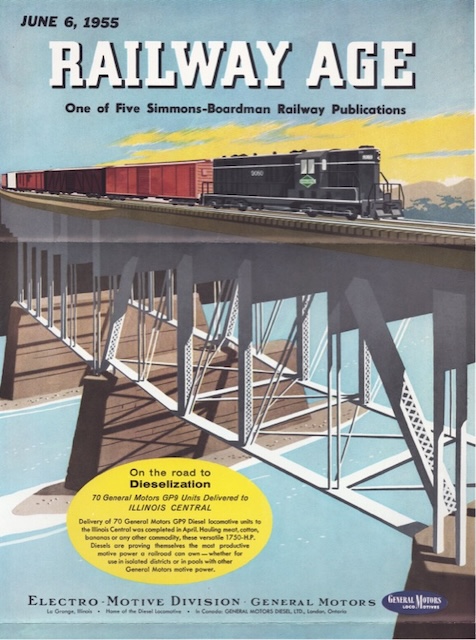 Click image to download a 2.3-MB PDF of this magazine cover. Click here to download a 5.0-MB higher resolution PDF of this cover.
Click image to download a 2.3-MB PDF of this magazine cover. Click here to download a 5.0-MB higher resolution PDF of this cover.
This cover and the previous one don’t have signatures, but Greg Palumbo has the original artworks in his collection, so they can definitely be attributed to Hill.
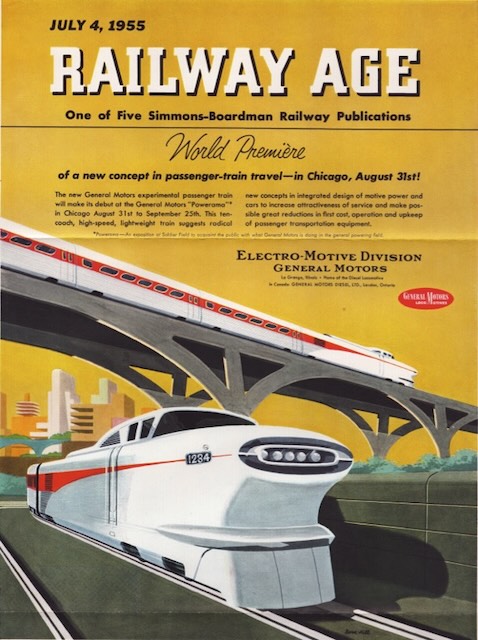 Click image to download a 2.3-MB PDF of this magazine cover. Click here to download a 5.0-MB higher resolution PDF of this cover.
Click image to download a 2.3-MB PDF of this magazine cover. Click here to download a 5.0-MB higher resolution PDF of this cover.
General Motors put its Aerotrain on the cover of at least five different issues of Railway Age, but this is the only one signed by Hill. One is signed by Stan Ekman, but one or two of the others might have been by Hill.
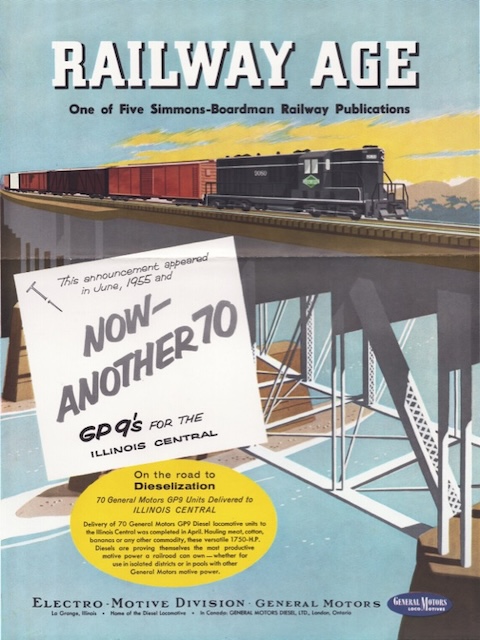 Click image to download a 2.3-MB PDF of this magazine cover. Click here to download a 9.7-MB higher resolution PDF of this cover.
Click image to download a 2.3-MB PDF of this magazine cover. Click here to download a 9.7-MB higher resolution PDF of this cover.
Things only got worse in 1957. First, GM recycled one of Hill’s 1955 paintings for its January 9 cover. After running two ads with paintings by Brillhart, one by Hanaville, and two of uncertain origin, GM replaced Kudner with another agency, Marstell, Richard, Gebhardt & Reed, that used an artist named Robert Branham for a few issues. In late 1956 and 1957 the agency did a series of cover ads featuring photographs of railroad presidents who were lauded as industry leaders for being smart enough to buy General Motors Diesels.
In 1958, Railway Age stopped accepting cover advertisements. Ironically, in the 1960s, Marstell hired an artist named Tom Fawell who was at least as innovative as Bern Hill and whose art was disliked as much by some EMD officials. He did a lot of ads for EMD.
In another irony is that GM may have fired Kudner because its president, James Ellis, was such a close friend of GM President Harlow Curtice. Curtice was an amazing executive. When economists predicted a recession in 1954, he announced that General Motors would spend a billion dollars on capital improvements. Ford, Chrysler, and other companies followed GM’s example and soon the economy was booming, making GM the first corporation in history to earn a billion dollars in annual profits in 1955. It was Curtice’s leadership in preventing a recession, not the resulting profits, that led Time magazine to make him its 1955 Man of the Year.
Curtice normally gave GM’s division heads plenty of autonomy, but he apparently made an exception when it came to advertising. When Kudner had creative differences with various GM divisions that had hired the agency, Ellis went to Curtice and Curtice overruled the division leaders. This led to resentments and in 1957, as Curtice was nearing retirement, Buick, Frigidaire, and GMC Truck & Coach all fired Kudner, leaving the company a shell of its former self that was soon taken over by another agency.
Is this why EMD fired Kudner in 1956? If resentments within EMD against Bern Hill’s incredible paintings had been settled by Ellis asking Curtice to overrule EMD leaders, EMD might have decided the best thing to do would be to change agencies. We may never know, and in any case Hill’s 1954-1956 paintings were no longer as artistically interesting as his 1950-1953 paintings, probably due to pressure from EMD.
Hill spent the remainder of his career doing art for American Airlines, Chesapeake & Ohio Railway, and other companies as well as painting covers for Reader’s Digest, Saturday Evening Post, and other magazines. Before he died in 1977, Trains magazine put six of his paintings on the covers of various 1971 through 1975 issues of its monthly magazine (plus one in 1982). Advertising art isn’t copyrightable so Hill earned no royalties from those covers, but I hope it helped him realize that he had a lasting impact on railroad art.
